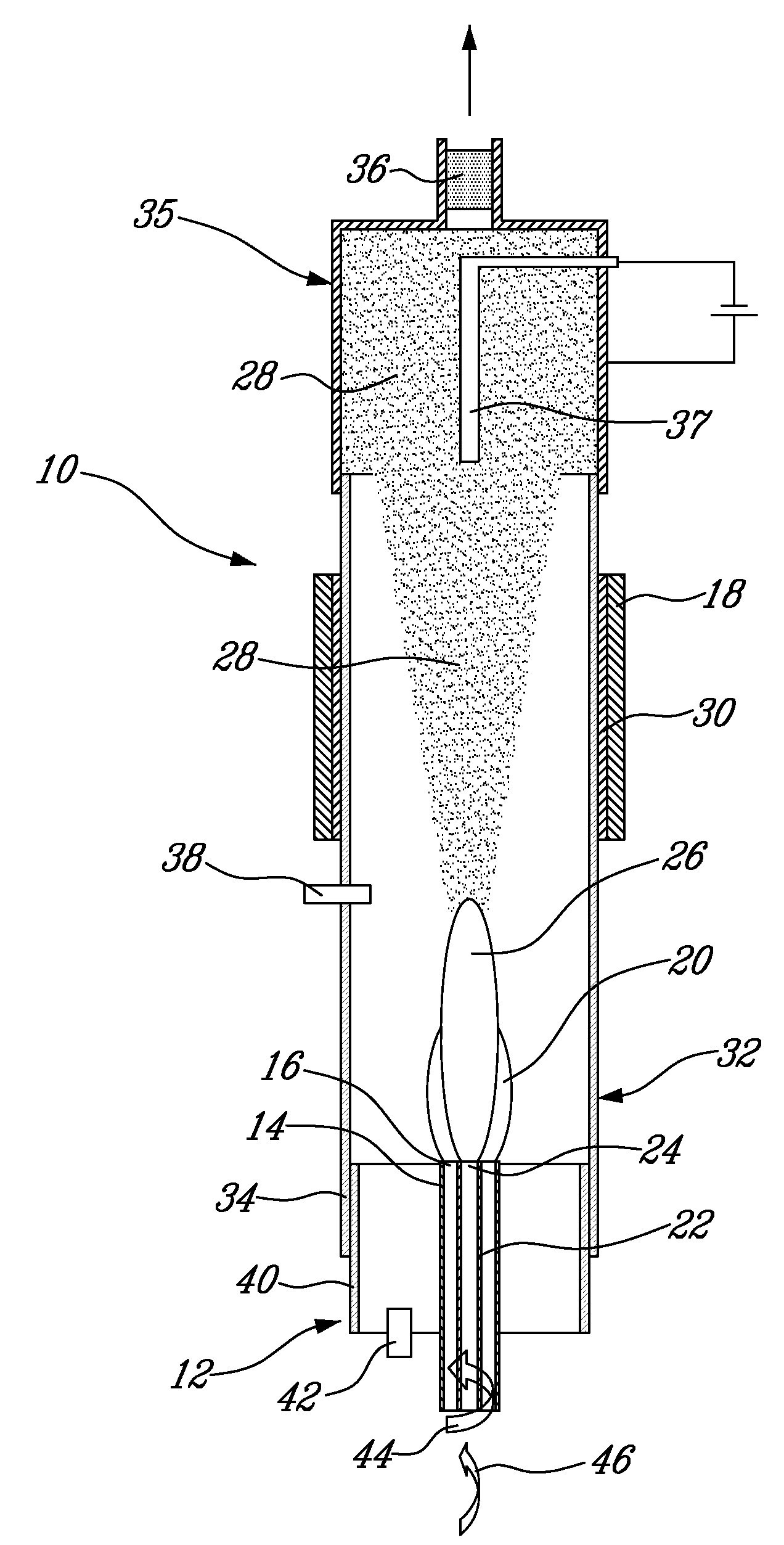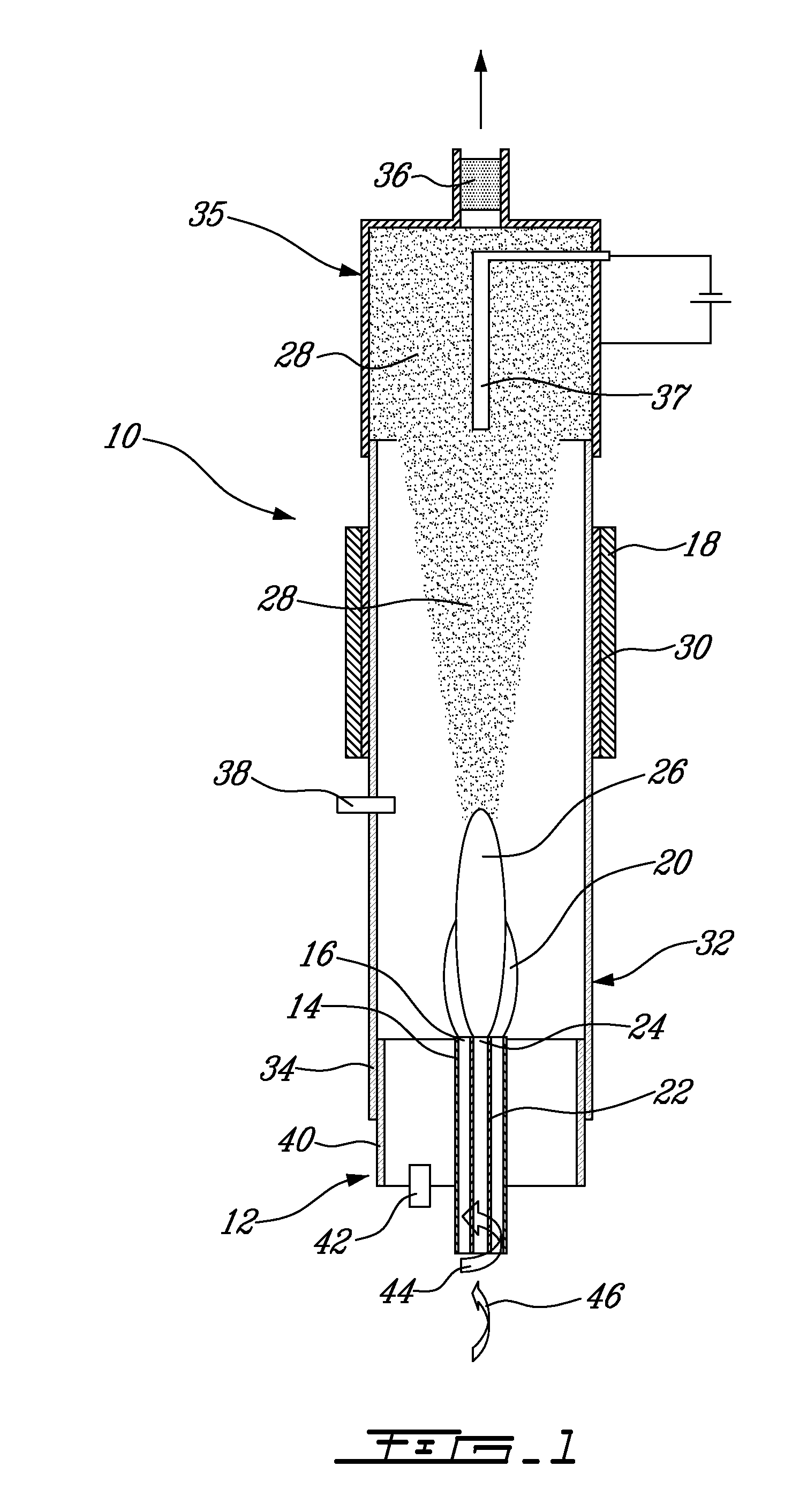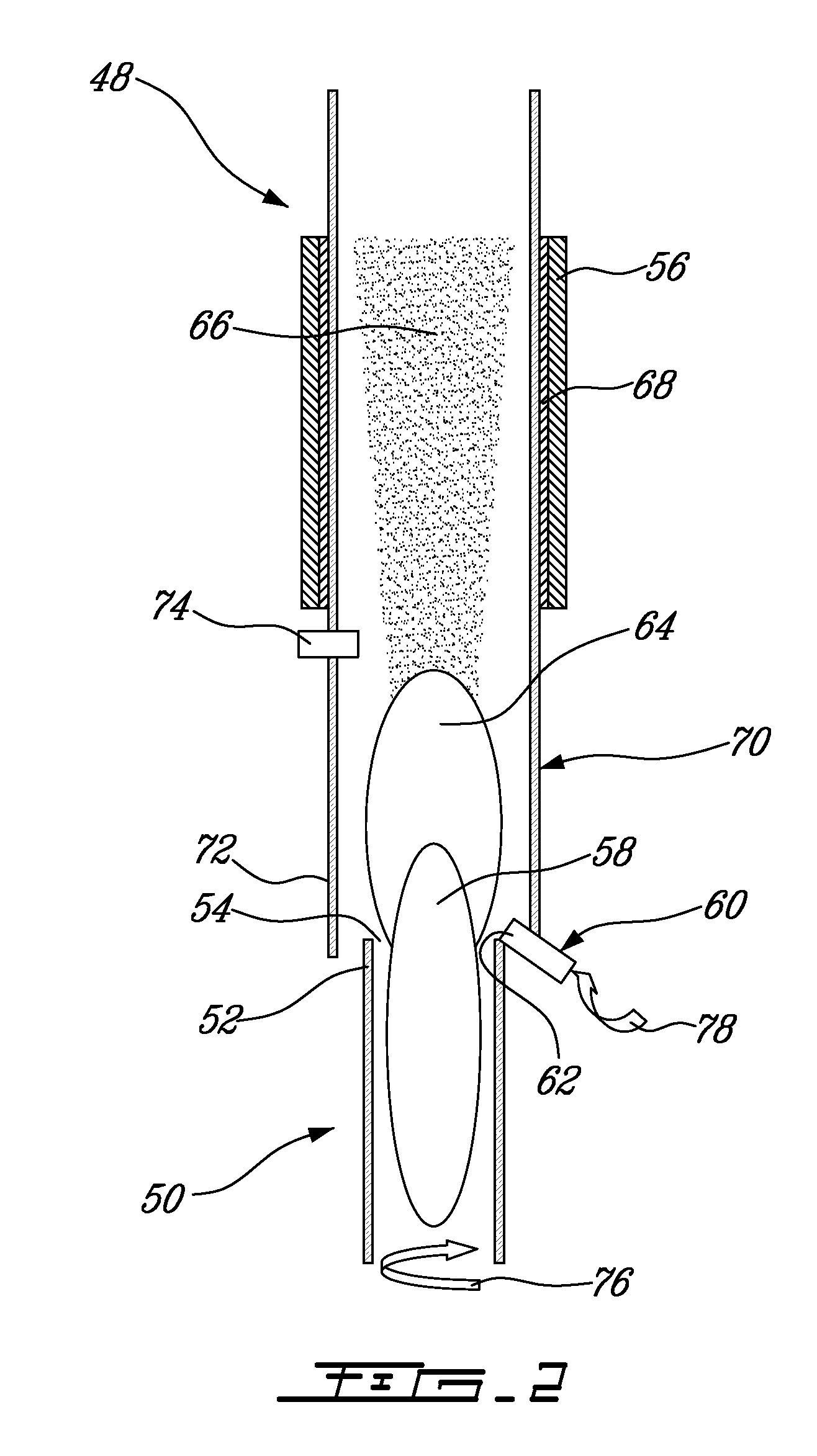Method and apparatus for producing single-wall carbon nanotubes
a carbon nanotube and single-wall technology, applied in nanotechnology, inorganic chemistry, coatings, etc., can solve the problems of large energy consumption and limited use of cobalt vapor in the production of single-wall carbon nanotubes
- Summary
- Abstract
- Description
- Claims
- Application Information
AI Technical Summary
Benefits of technology
Problems solved by technology
Method used
Image
Examples
example
[0067]The production or synthesis of single-wall carbon nanotubes has been performed by using a plasma torch as illustrated in FIG. 1. The following experiment has been carried out by the inventors by providing the plasma torch with a cooling system and a Faraday shield. The cooling system prevents the plasma torch from over-heating and being damaged. The Faraday shield comprising a conductive material, preferably aluminium, prevents the electromagnetic radiations from escaping from said apparatus, thereby protecting users of the plasma torch. All the parameters related to the plasma torch are controlled by a computer using the LABVIEW® software. The parameters can also be manually controlled. The inert gas used for generating the primary plasma was argon, the metal catalyst was ferrocene, the carbon-containing gas was ethylene and the cooling gas was helium. Helium was also injected toward the plasma discharging end so as to prevent carbon deposit. The injecting device illustrated ...
PUM
 Login to View More
Login to View More Abstract
Description
Claims
Application Information
 Login to View More
Login to View More - R&D
- Intellectual Property
- Life Sciences
- Materials
- Tech Scout
- Unparalleled Data Quality
- Higher Quality Content
- 60% Fewer Hallucinations
Browse by: Latest US Patents, China's latest patents, Technical Efficacy Thesaurus, Application Domain, Technology Topic, Popular Technical Reports.
© 2025 PatSnap. All rights reserved.Legal|Privacy policy|Modern Slavery Act Transparency Statement|Sitemap|About US| Contact US: help@patsnap.com



